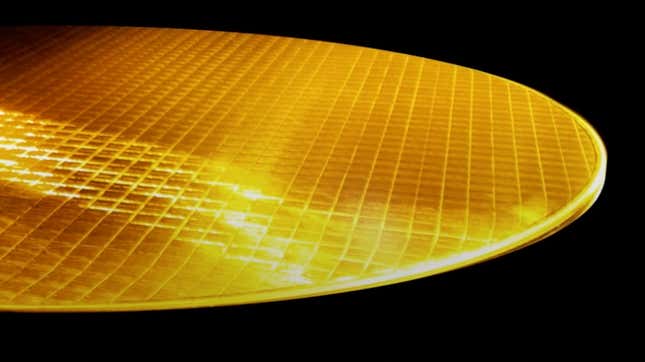
Memory and data storage producer Micron have begun production and shipment of the world’s first 232-layer NAND in Singapore, which marks the first time a NAND manufacturer has surpassed 200 layers. This opens the door for the world’s first 200TB SSDs. For comparison, even the flashiest personal computers usually stop at 2TB of storage, and the current largest SSD in the world is Nimbus Data’s 100TB ExaDrive.
Prior to the innovation, the company’s NAND topped out at 176-layers. The new NAND is also 50% faster than Micron’s 176-layer offering, at a top speed of 2.4 gigabytes per second, while featuring 100% higher write bandwidth and 75% higher read bandwidth. The company also says that the 232-layer NAND has 1 terabit per die, the highest areal density in the industry, and has heightened capacity and energy efficiency over previous Micron NANDs.
“Micron’s 232-layer NAND is a watershed moment for storage innovation as first proof of the capability to scale 3D NAND to more than 200 layers in production,” said Scott DeBoer in the company’s press release. DeBoer is Micron’s executive vice president of technology and products.
Speaking to Techradar Pro in 2020, Nimbus Data CEO Thomas Isakovich spoke promisingly about what this kind of NAND density can achieve, saying “We can do 200 TB in 2021 and likely 400 TB by 2023, depending on the timing of NAND density gains.” The pandemic’s certainly pushed that timetable back—2021 might have been too ambitious in the first place—but it seems that the company’s finally going to be able to get moving on it.
Micron says that the new NAND is in production at the company’s Singapore factory, and will ship to customers in “component form.” But in case you think this means you’re going to upgrade your gaming PC’s capacity by about 100 fold, think again. That 100TB SSD we mentioned earlier currently costs $40,000, and a 200TB one is going to be more expensive.
Instead, this backwards compatible NAND will be best suited for data centers handling mobile applications, cloud computing, and artificial intelligence.
It’s encouraging seeing a successful achievement coming out of the computer hardware industry, considering we’re in the middle of a chip shortage, which the U.S. is flailing to fix among plenty of resistance on Capitol Hill.
Update: This article originally incorrectly listed Nimbus Data CEO Thomas Isakovich as the CEO of Micron.